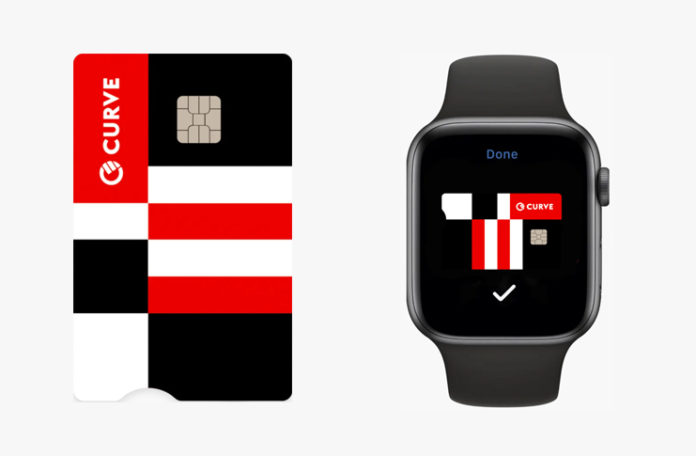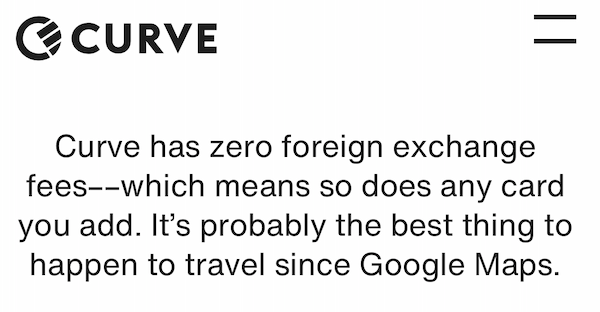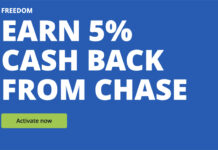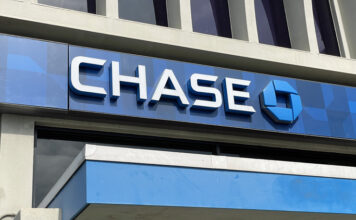
TravelingForMiles.com may receive commission from card issuers. Some or all of the card offers that appear on TravelingForMiles.com are from advertisers and may impact how and where card products appear on the site. TravelingForMiles.com does not include all card companies or all available card offers.
Some links to products and travel providers on this website will earn Traveling For Miles a commission that helps contribute to the running of the site. Traveling For Miles has partnered with CardRatings for our coverage of credit card products. Traveling For Miles and CardRatings may receive a commission from card issuers. Opinions, reviews, analyses & recommendations are the author’s alone and have not been reviewed, endorsed, or approved by any of these entities. For more details please see the disclosures found at the bottom of every page.
Curve is a product that’s been around in the UK for some time but that is only now making a bid to crack the US market and it’s a product that even though it has been open to me for a while (thanks to my home in the UK), has never really held much interest. Now, however, a small and possibly overlooked aspect of the US version of Curve is making me seriously reconsider my ambivalence towards the card.
What Is Curve
Put simply, Curve is a card that acts as a front for all your other credit cards so a Curve customer loads their existing credit cards to their Curve account (Amex cards don’t currently work with Curve) and then uses their Curve card (or the Curve app) to pay for their purchases while still earning the bonuses that their underlying credit cards offer.
The incentive to use a Curve card is primarily convenience but, for a limited time, Curve will also pay customers a little bit of cashback every time they use their card.
As I understand it, while a Curve account can hold multiple credit cards, only one card is ever directly linked to the Curve card at any moment in time so a user will either have to make sure that their preferred card is linked to Curve before each transaction (e.g. have their Chase Sapphire Preferred Card linked to Curve before a rental car booking or have their Citi Premier Card linked to Curve before a grocery store purchase) or they’ll have to use Curve’s “Go Back In Time” feature to move charges across to the correct credit cards after the charges have posted.
My Thoughts On Curve
Overall, I haven’t been wowed by Curve because (mostly) I haven’t been able to understand how it will make my life any easier. I have no issue with carrying around multiple credit cards in my wallet and having multiple credit cards in my Apple Wallet, so I very rarely find myself in a position where I don’t have the right card with me to maximize my earnings.
Sure, Curve would make my wallet a lot lighter but I would be lightening my load at the expense of having to remember to assign the correct card to Curve before each transaction (something that I know I’d find annoying within a few transactions) or at the expense of having to access my Curve account on a frequent basis to reallocate charges to the cards on which they’ll earn me the most points/miles/cash back. That’s an added job that I can do without so I’d rather just stick with a slightly overweight wallet.
There is, however, one small aspect of the Curve Card that has recently caught my attention and that has changed how I view what Curve can do for me – Curve doesn’t charge foreign transaction fees regardless of the underlying credit card.

A key principle of my miles and points strategy is that I do everything possible not to earn less than 2% back on every purchase that I make and while I’m home in the US, that’s not a problem as I have cards that cover me for most eventualities. When I’m abroad, however, things are a little different.
Abroad, although my Chase Sapphire Reserve Card will take care of dining and travel purchases and my Citi Premier Card will take care of grocery purchases and gas station purchases, I don’t have a card that will earn me at least 2% back on just about everything else.
Curve could change that.
Assuming that Curve doesn’t somehow end up using wildly unsatisfactory exchange rates, it will be possible to associate cards like the no annual fee Citi Double Cash Card (review) with a Curve account and then use that abroad without incurring the foreign transaction fee that the Citi Double Cash Card would usually charge.
Similarly, it should be possible to associate the excellent Chase Freedom Flex Card (review) with Curve to earn 3 points/dollar on overseas dining and at overseas drugstores without incurring foreign transaction fees and without having to pay a credit card annual fee. Also, as I can’t see any wording on the Chase website that says foreign merchants are excluded, it should be possible to make use of the Flex Card’s quarterly rotating bonus categories while abroad. Curve could turn the Flex Card from a great card into a truly amazing one.
Bottom Line
Most of what I see the Cuve Card offering really doesn’t interest me very much. In fact, most of it interests me so little that I’ve only just remembered that I should probably add my referral link into this post (link) to see if I can move out of the incredibly low position that I currently occupy on the waitlist.
However, the fact that Curve claims that it won’t charge a foreign transaction fee has caught my attention as the idea of being able to use a Citi Double Cash Card to earn 2% cash back anywhere in the world and the idea of being able to use a Chase Freedom Flex Card to earn 3 points/dollar on worldwide dining all without paying an annual fee or any foreign transaction fees is very, very attractive.
Of course, we’ll have to wait and see if and when Curve will finally launch in the US and if its business model actually proves to be viable (I have my doubts) but for now, Curve has my attention…albeit for only one reason.














![Earn 20,000 bonus Amex points on Air France/KLM bookings [Targeted] a row of seats in a plane](https://travelingformiles.com/wp-content/uploads/2024/03/air-france-new-business-class-2-741-80x60.jpg)


I think this post will lead to the nerf of this benefit